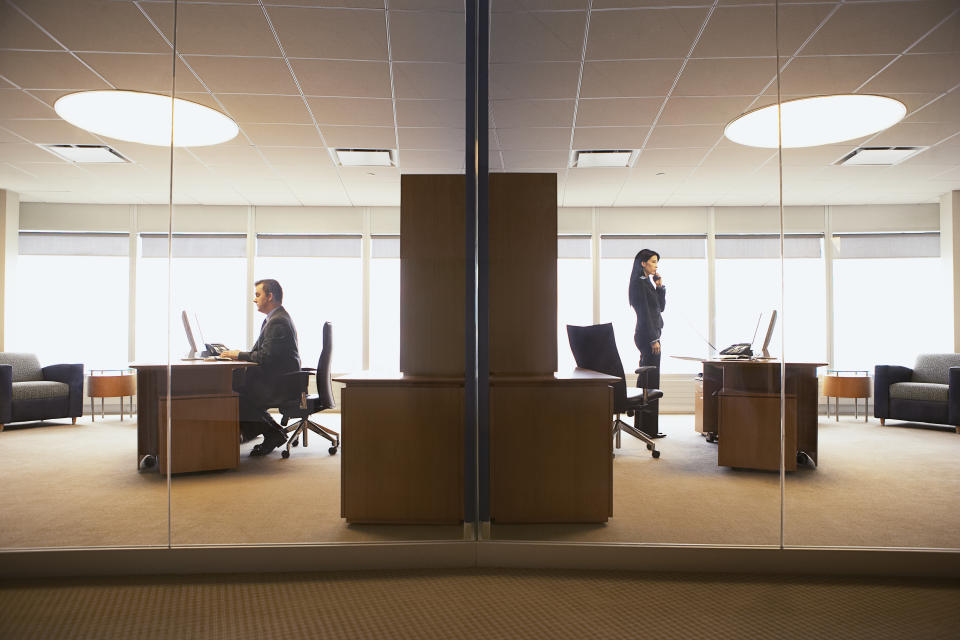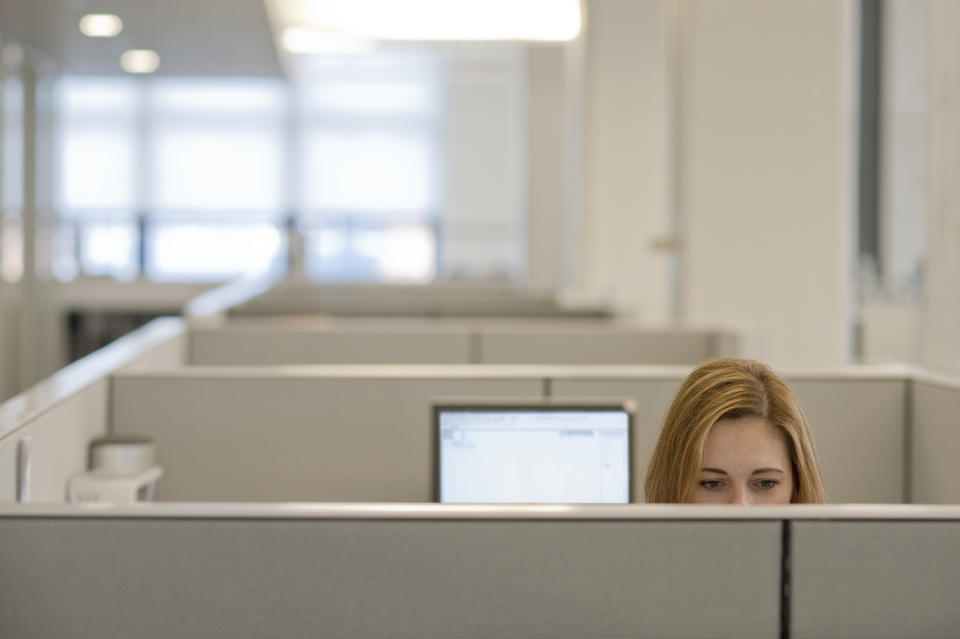Coronavirus: What might social distancing look like in the workplace?

Many of us have become accustomed to working from home since the UK government introduced stringent coronavirus lockdown measures. Offices around the UK are sat empty as we send emails from the comfort of our sofas — but as workplaces begin to bring employees back, things are likely to look very different.
This week, the UK government announced people who are unable to work from home can return to their jobs. Workplaces that are allowed to open include those involved in construction, manufacturing, logistics, distribution and scientific research. Over time, people will gradually be allowed to work in offices again too.
The advice for workers is to stick to social distancing rules and to stay apart by two metres. But how will this work for employees in offices?
“The trend towards open plan offices and maximising the number of people per square foot is likely to mean that we run out of space very quickly, so offices will likely need to run shifts or have groups who rotate through the office at different times,” says Dr Sebastian Bailey, co-founder of Mind Gym, the psychology-based company which advises leading businesses on organisational transformation.
From Apple to Facebook, many of the global tech giants are in favour of open layouts for employees, but whether this will change in a post-coronavirus world remains to be seen. According to research by Savills, UK employees are more likely to work in open plan offices than any other European country. A separate study found 80% of US workplaces are open plan.
READ MORE: Why ‘meaningful’ work is going to become more important post-coronavirus
Open work environments were introduced to encourage collaboration and communication among employees, but after the COVID-19 crisis, they may pose a risk to health.
The virus that causes COVID-19 is spread primarily through droplets when an infected person coughs, sneezes or speaks. You can also become infected by touching a contaminated surface and then touching your eyes, nose or mouth before washing your hands — which means workers who sit in close proximity will likely be at higher risk.
According to a recent Danish study, occupants in open-plan offices with more than six people had 62% more days of sickness absence, as the lack of cubicles allow the easy transmission of illnesses.
After coronavirus, the cubicle may make a reappearance in UK offices as the government has said employers should look into putting barriers in shared spaces. In some cases, people could be required to face away from each other — which will likely feel strange for employees used to rubbing shoulders with their colleagues.
Creating workplace shift patterns to minimise the number of people in contact with one another may also become the new normal.
READ MORE: Does working from home help the environment?
“We’ve seen supermarkets place stickers on the floor two metres apart and put up screens, we need to take a similar approach in the workplace,” Bailey adds. “So for example, move workstations two metres apart.”
Remote working will be here to stay for some firms. Before the coronavirus pandemic, working from home was a luxury afforded only to a select few employees and self-employed people. In fact, only 30% of UK employees ever worked from home during 2019, according to the latest research by the Office of National Statistics.

Looking forward, however, many will be working remotely for the foreseeable future. “Of course there are some roles that need us to be in the room, but post-lockdown I can see coming into the office being a tactical decision, rather than out of habit,” says Simon Paine, co-founder and CEO of the PopUp Business School, which helps people start their own businesses.
“Thousands of businesses have proved they can be just as productive — if not even more so by flexible approaches to work,” he adds. “Why on earth would anyone want to commute daily, poison our air any more than necessary and spend our hard-earned cash to go and sit in an unproductive environment?”
Many people want coronavirus lockdown restrictions to be eased when it is safe to do so. But there is also increasing anxiety over what the future of work will look like — and whether rushing to return will lead to a rise in infections.
READ MORE: Will ‘busyness’ stop being status symbol post-COVID-19
A survey of 2,075 UK adults by the Trades Union Congress revealed 39% are concerned about not being able to socially distance from colleagues when back at work, and over a quarter (28%) are worried about not being able to socially distance from customers or clients.
To address this, Bailey says businesses will need to be clear about the new rules — such as what a “phased” return to the office will look like. This means outlining how many people will be in the workplace at one time, as well as how sanitisation and disinfection will work. “This will provide people with confidence and also creates some social pressure to do the right thing,” Bailey says.

 Yahoo Finance
Yahoo Finance 
